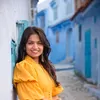No wonder Bhutan is called the last Shangri-la! An imaginary, beautiful place, often far away, where everything is pleasant, pure, perfect, innocent……
I always believed I leave a part of me in places I fall in love with. In Bhutan I left a huge part of me back and am so looking forward to going back soon to this small dreamy paradise. A country where development is measured by the Happiness Index, where chilies are considered a vegetable, where I saw Takhin, where your skin and hair glows because of the pollution free environment.

DURATION: 8 days / 7 nights in early May
ACCOMMODATIONS: Hotel Norbuling (Thimpu), Puna cottage (Punakha), Gangtey palace (Paro)
TRANSPORTATION : Flew from Bangalore-Kolkata- Bagdogra Airport and entered Bhutan (Phuentsholing) by road and flew back from Paro-Kolkata-Bangalore. You could save a day’s commute if you opt to fly in and out of Paro, but the drive to Thimpu is very scenic and worth the commute time. (We rented a car with driver for our transport within Bhutan for the entire trip)
VISA: Indian, Bangladeshis and Maldivian nationals can obtain a permit at the port of entry on producing a valid passport with a minimum of 6 months validity and 04 Passport size photographs (Indian nationals can use their Voters Identity Card (VIC)). All other tourists must obtain a visa clearance prior the travel to Bhutan. (Restricted Area Permit is required to visit Punakha from Home Ministry of Bhutan. This is given only after you have entered Thimphu. Permits are not issued on Saturday and Sunday and Govt Holidays.)
CURRENCY: 1 Ngultrum = 1 INR = 0.01458 USD
[ ♦♦♦ A Must | ♦♦ Recommended | ♦ Point of Interest ]
DAY 1 – ARRIVING IN PHUENTSHOLING -BAGDOGRA AIRPORT-PHUENTSHOLING (170 KMS / 4 HRS)
Phuentsholing is a border town in southern Bhutan. It is uniquely more urban than other Bhutanese towns, having absorbed the neighbouring culture, but distinctly far more quiet and orderly than its neighbour. Overnight stay at Phuentsholing as we needed permit for proceeding.
♦Bhutan Gate: After check-in at hotel and grabbing a bite at a matchbox sized restaurant, Opting to make the most of the rest of the day, we headed towards Bhutan Gate (stands on the boundary of India and Bhutan). It has Jaigaon town of West Bengal, India on one side while on the other side is Phuentsholing town. The Bhutan Gate is an example of exquisite craftsmanship and beautiful wood paining. Signages are present at various locations, watch out so that you cross easily. All offices for immigration, transport and customs are located around here.
♦♦Zangto Pelri Lhakhang: Situated in the heart of Phuentsholing’s market place Zangto Pelri Lhakhang is a quaint and refreshing amidst the hustle and bustle in its surrounding spaces. There is a continuous stream of pilgrims here offering their prayers and spinning the prayer wheel in this temple with a little park. My 1st prayer in this happy country.
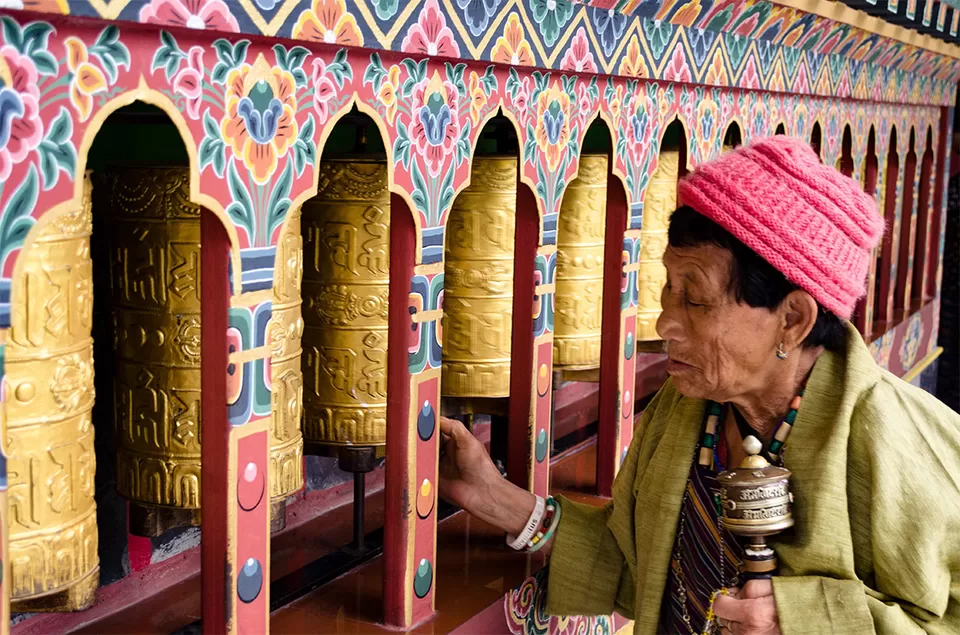
DAY-2 : PHUENTSHOLING-THIMPU (180 KMS/ 7.5 HRS), NIGHT LIFE
After collecting the permit. We started our drive to Thimphu. Enroute, we experienced breath taking views of Mount Everest, Kanchenjunga and other famous Himalayan peaks including the sacred Jumolhari with at least 5 stops to take in the beauty this place had to offer along with few instagramable clicks.
Thimphu, the capital of the tiny Himalayan Kingdom of Bhutan, is perhaps the smallest capital in the world. It is a gallery of traditional Bhutanese art, architecture, culture and tradition and best of all – still so ethnic and pure. Probably why I love Thimphu so much!
♦♦Mojo Park: We did not come to Bhutan for any raging nightlife. But there are a few spots to check out after dark. Mojo Park is one of Thimphu’s most popular night time hangouts. A neighborhood-style pub and live music venue, the atmosphere is similar to a blues pub in any major capital city around the world. Start mingling with the revellers, and the overwhelming friendliness and positive energy will remind you that you’re in Bhutan.
♦Momos: All that dancing and grooving made us hungry and since it was past 11 pm we chose to have the Thukpa outside the pub from the roadside stall along with some steaming hot momos. Glad we did!
DAY-3 : EXPLORING THIMPHU- POST OFFICE, BUDDHA DORDENMA, ART SCHOOL & TAKIN
Early morning walk around the clock tower square and The Memorial Stupa (also known as the Thimphu Chorten) got us to interact with the locals setting up shops and we got some recommendations on our list of places to see and things to do.
♦♦♦General Post Office (GPO) : In Thimphu post office you can have your personal stamp created with your favourite picture to post, one which is legally valid and can be used for sending letters or postcards. Imagine! Such a great souvenir too! You can get 12 stamps each with a face value of 30 Ngultrum and costing 360 Ngultrum in total.
♦♦Buddha Dordenma statue: A quick stop at this gigantic Shakyamuni Buddha statue in the mountains of Thimphu (celebrating the 60th anniversary of fourth king Jigme Singye Wangchuck). This place is visible to one from almost any place in Thimphu. We chose to visit in the morning, as it could get very windy later.
♦♦♦National Institute of Zorig Chusum : For my love for ART we ensured a visit to this institute that helps in preserving Bhutanese traditional arts. 13 different art forms including painting (mostly tankas), embroidery, wood carving and sculpting are taught here. The school offers free education, food and lodging to its students. You can also buy souvenirs from the gift shop here that features work done by the students and the proceedings go to the student fund. (100 Ngultrum- Entry ticket)
♦♦Motithang Takin Preserve: We were curious to see Takin, which is the national animal of Bhutan. It is believed that Takin was created by Bhutan’s Favourite Buddhist master, Lam Drukpa Kuenley. The takin was given life when he attached a goat’s skull to the skeleton of a cow. You won’t want to miss the chance to admire the unique physique and natural agility. Would you?
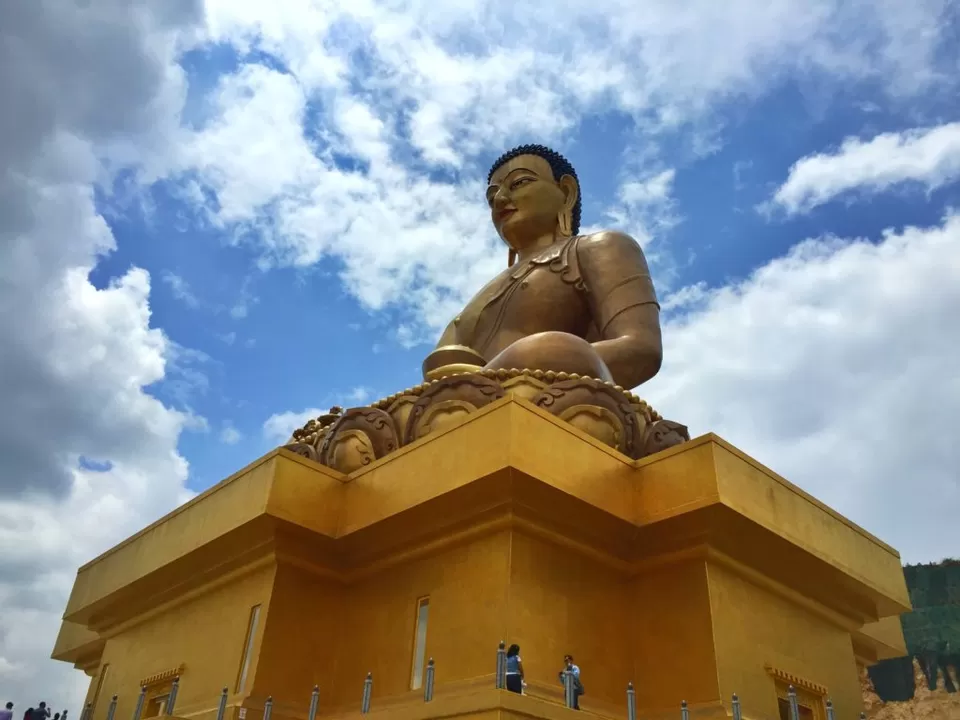
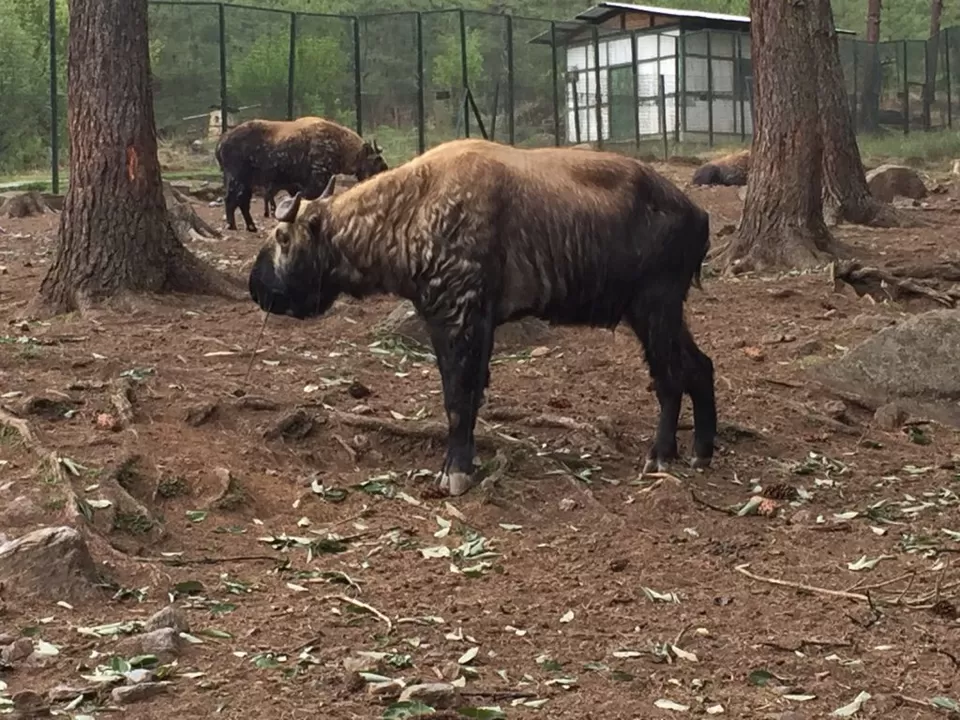
DAY-4 : NATIONAL LIBRARY, SIMPLY BHUTAN, CAFÉ HOPPING, THIMPHU DZONG
♦National Library: It’s not a typical library you would expect in any other country. Most books are for monks and well organised Library with many collection of literatures relating to Buddhist Culture and religion. We got to see the world’s largest published book in the world in 2003 called ‘Bhutan’. A page from the book is flipped daily by the librarian.
♦♦♦Simply Bhutan Museum: Wanted a glimpse into Bhutanese culture along with some fun and found it here in the right measure. We were welcomed with the local wine Ara (made from fermented rice). We got a glimpse into traditional methods of construction, cooking, worship and other facets of Bhutanese culture. The highlights were wearing the local costume (Gho and Kira), dining the local way and joining in the last dance. We even tried our hand at archery (the national sport of Bhutan). Exposing yourself to various cultures is so vital towards personal growth. (100 Ngultrum- Entry ticket)
♦♦Café Hopping: Thimphu has many cafes, Bhutanese heritage restaurants, casual eating as well as fine dining restaurants serving various cuisines. A favourite among the expats in Thimphu and conveniently located in the heart of the main town, Ambient cafe was our first stop. Followed by a cream roll from swiss bakery. After some shopping in the craft bazaar we headed to the Bhutan kitchen for some local food.
♦♦ Craft Bazaar: (closed on Tuesdays, Opposite to Taj Tashi) is a perfect place to shop for art and craft of Bhutan. The shops are made using the eco-friendly bamboo and run by mostly youngsters, we were mesmerised by the vibrant colours on display. Managed to get some great deals on wood carvings and fridge magnets along with few prayer wheels.
♦♦♦Thimphu Dzong : A Buddhist monastery and fortress on the northern edge of the city. Our visit to the Thimphu Dzong was well timed for the ceremony where the guards bring down the flag after office hours. The Dzong houses three main sections: The King’s office, The administration block and the spiritual division. It looks stunning at night with the lights. (Dzong is open for visitors only after 5 PM)
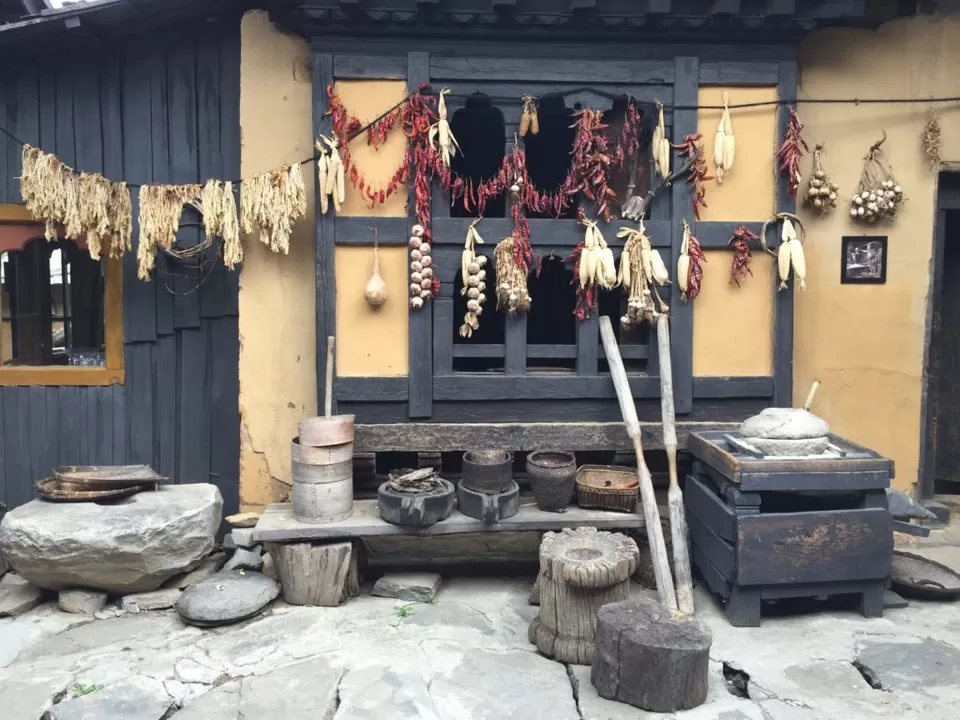
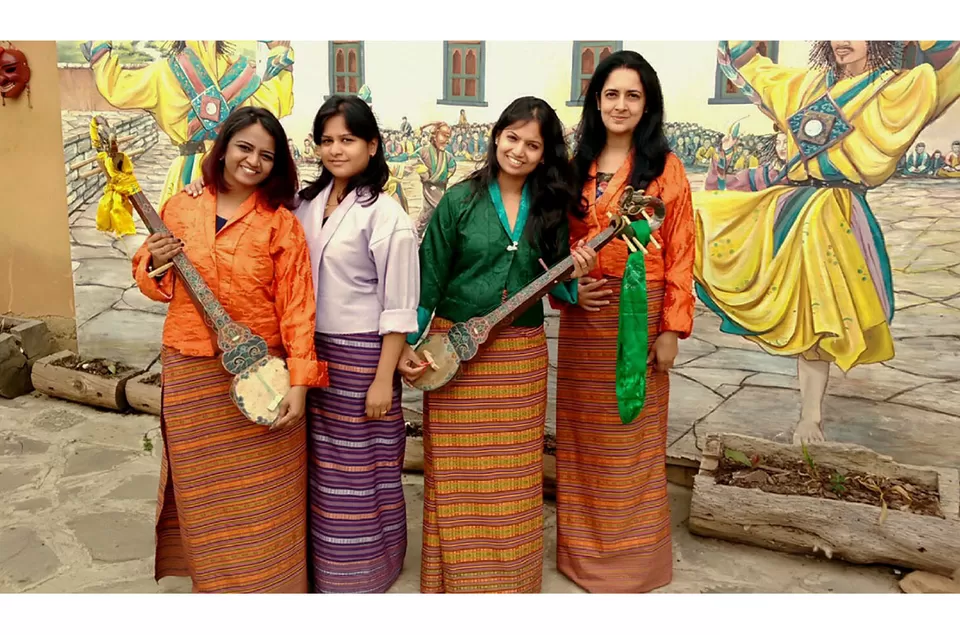
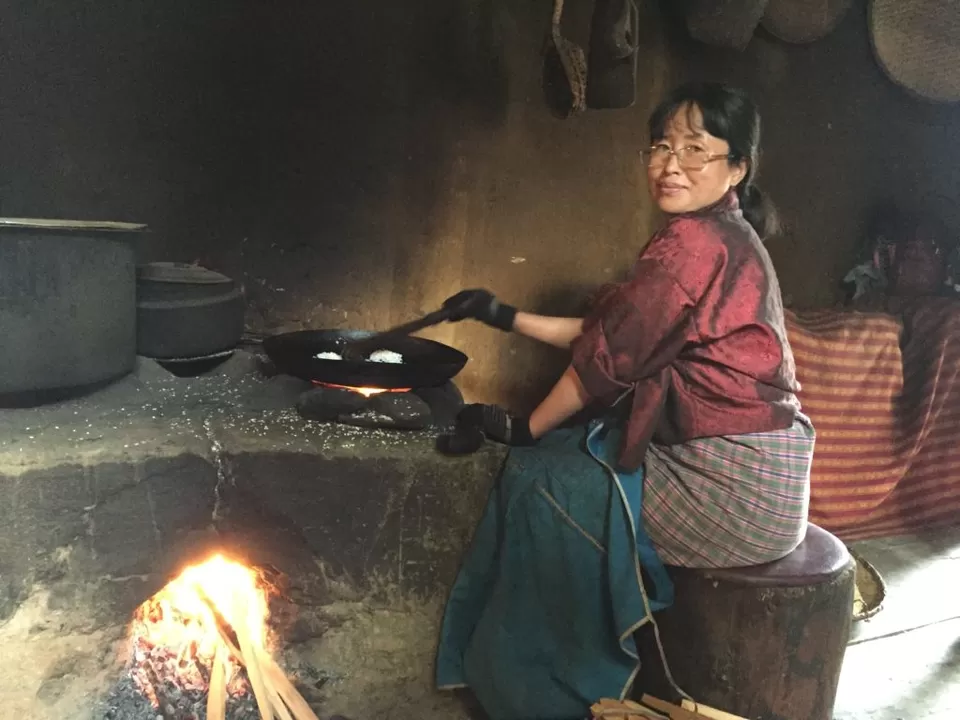
DAY-5 THIMPHU-PUNAKHA (85 KMS/ 3 HRS), DOCHULA PASS, PUNAKHA DZONG, SUSPENSION BRIDGE
♦♦Dochula Pass: On our way to Punaka (known as the Winter Capital of Bhutan until 1966) we stopped by Dochula Pass (alt. 3150 Mts) with 108 Chortens (Budhist shrines). If the sky is clear you get the most spectacular view of the Eastern Himalayan mountain ranges from this pass but we had no such luck with low hanging clouds.
♦♦ Chimilakhang: After a brief hike through the paddy fields we reached this interesting place also known as the Mad monk’s temple. The saint Drukpa kinley was known for his outrageous methods of preaching. He is represented by a Phallus. This symbol is found in souvenir shops, temple and some of the walls of the nearby homes. (kept in homes to drive away evil eye and the negative energies). It was here that the mad monk after killing the demon of Dochula buried the body under a rock near the temple. A chorten stands as a reminder nearby. Wondering why the monk tapped our heads with the phallus, we asked our guide. Apparently this place is also known as the fertility temple as lot of childless couples were blessed with children after paying a visit here. Meaning blessed by the phallus!
♦♦♦Punakha Dzong: Built strategically at the junction of Pho Chu and Mo Chu rivers in 1637 to serve as the religious and administrative centre of the region, Punakha Dzong has played an important role in Bhutan’s history. Damaged by four catastrophic fires and an earthquake, the Dzong has been fully restored by the present King. Open for visitors during Punakha festival and in summer months when the monk body moves to Thimphu. This Dzong is also the seat of all royal crowning functions. We had timed our visit perfectly for spring season for gorgeous views of the lilac-coloured jacaranda trees that grow around the Punakha Dzong.(300 Ngultrum- Entry ticket)
♦Punakha Suspension Bridge: We walked down from the Dzong to this longest suspension bridge of Bhutan. The bridge connects the dzong with the villages on the other bank of the Po Chhu river. Draped with prayer flags and mountains surrounding from all sides surely makes for a breath-taking view.
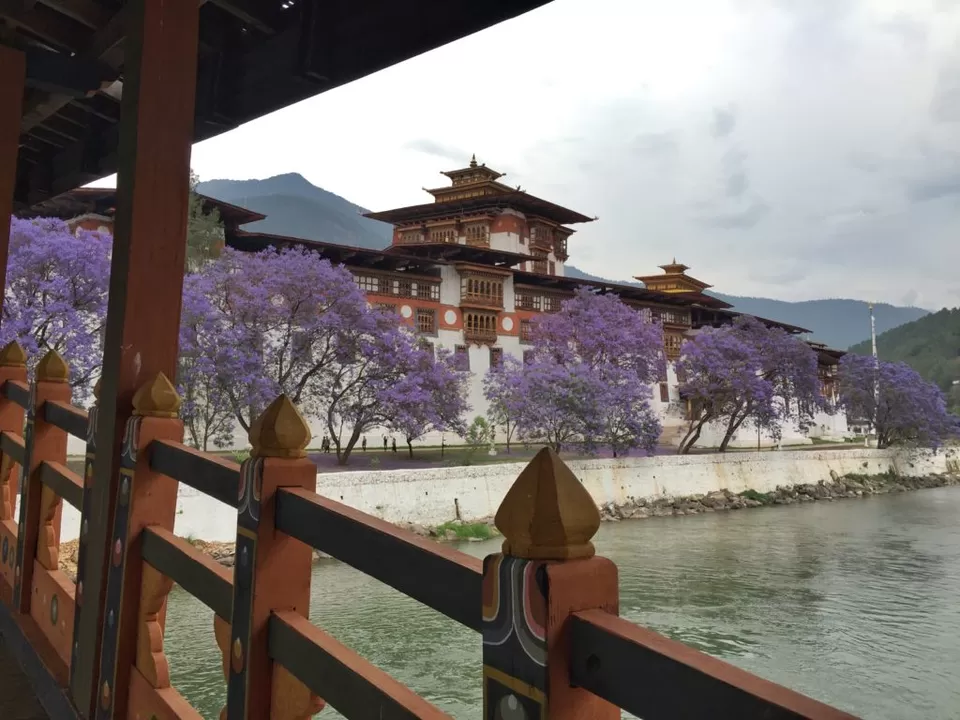
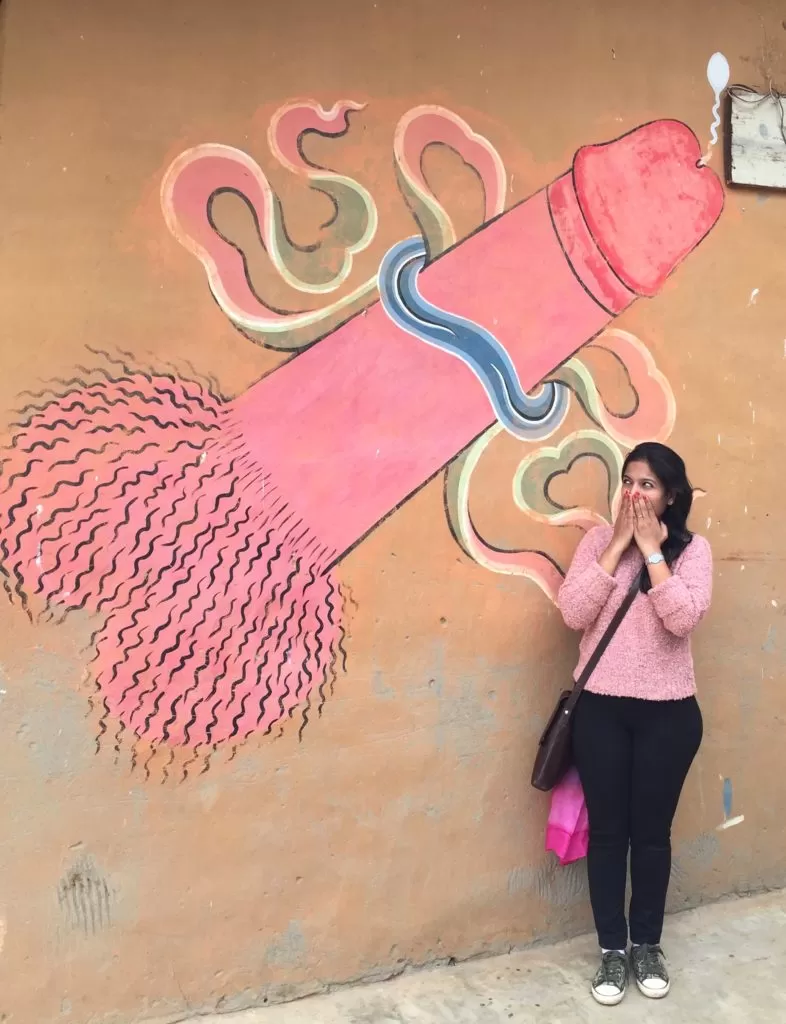
DAY-6 PUNAKHA-PARO (127 KMS/ 3.5 HRS), GANGTEY PALACE
Paro is also one of the most fertile valleys in the Kingdom producing a bulk of the locally famous red rice from its terraced fields.
♦♦♦ GANGTEY PALACE HOTEL: We chose Gangtey Palace for 3 reasons- Location, it’s actually a Palace and traditional Bhutanese hot stone bath. This 19th-century, traditional Bhutanese building (predominantly wooden) was once the residence of the penlop (governor) of Paro and it oozes historical charm. Awesomely located on a hill, with breath taking views of the entire mountain ranges surrounding Paro. We stayed in the attic room (accessible by narrow wooden staircases) with few pieces of antique furniture and wall hangings. Since it was a clear day, the Himalayan peaks were visible from the attic window. We just wanted to savour the atmosphere and spent the whole day relaxing in the courtyard area in the centre, writing postcards and learning about the exotic flowers in the garden. Once dark, we moved to the bar to watch the lights of the town, the museum and the monastery below. Unforgettable!
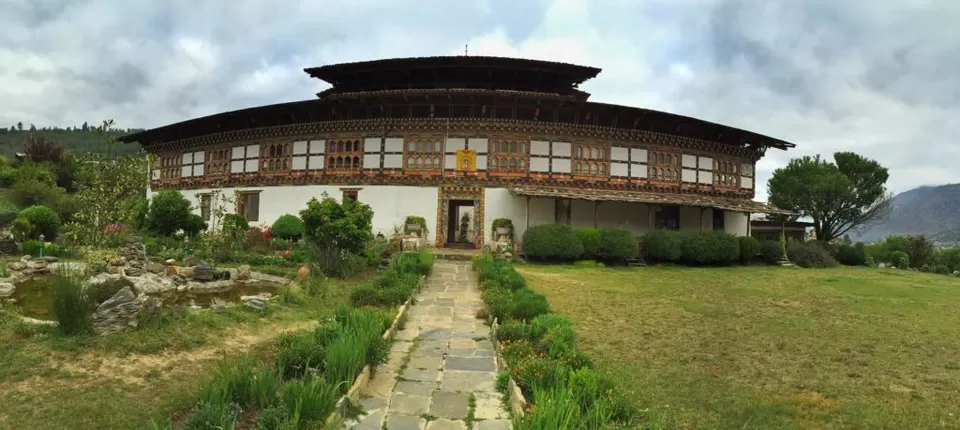
DAY-7 HIKE TO TIGER’S NEST & HOT STONE BATH
♦♦♦ Taktsang Hike: We started the day early with trekking to Taktsang (6 hours-started around 8 am and back by 2 pm, easy trek). No visit to Bhutan is truly complete without a trek to this iconic religious site: Tiger’s Nest Monastery. The higher we hiked, the more prayer flags appeared, Bhutanese believe that hanging strings of these prayer flags will send their prayers to the heavens through the winds.
Legend has it Guru Rimpoche, flew to Taktsang back in the 8th Century AD on the back of a tigress. It is believed that the former wife of the emperor, known as Yeshe Tsogyal, willingly became a disciple of Guru Rinpoche and transformed herself into a Tigress for the purpose and landed at the cliff. For three months, three days, and three hours, Guru Rimpoche meditated in what is today called the Taktsang Senge Samdup Cave, before emerging in eight different incarnations. A statue of Dorje Droloe guards the entrance to the cave. Legends aside, this scenic beauty will leave you speechless.
♦♦♦ Traditional Bhutanese hot stone bath: This unique experience of hot stone bath after the hike was really refreshing at the Gangtey Palace. Stones gathered from the mountains, known for their mineral properties are heated in a wood fire. Individual wooden tubs are filled with natural spring water and artemisia leaves, the hot rocks are placed in an compartment of the tub. The alchemy behind these rustic baths is that the hot stones release high concentrations of minerals into the bath, relieving joint aches and rejuvenates.
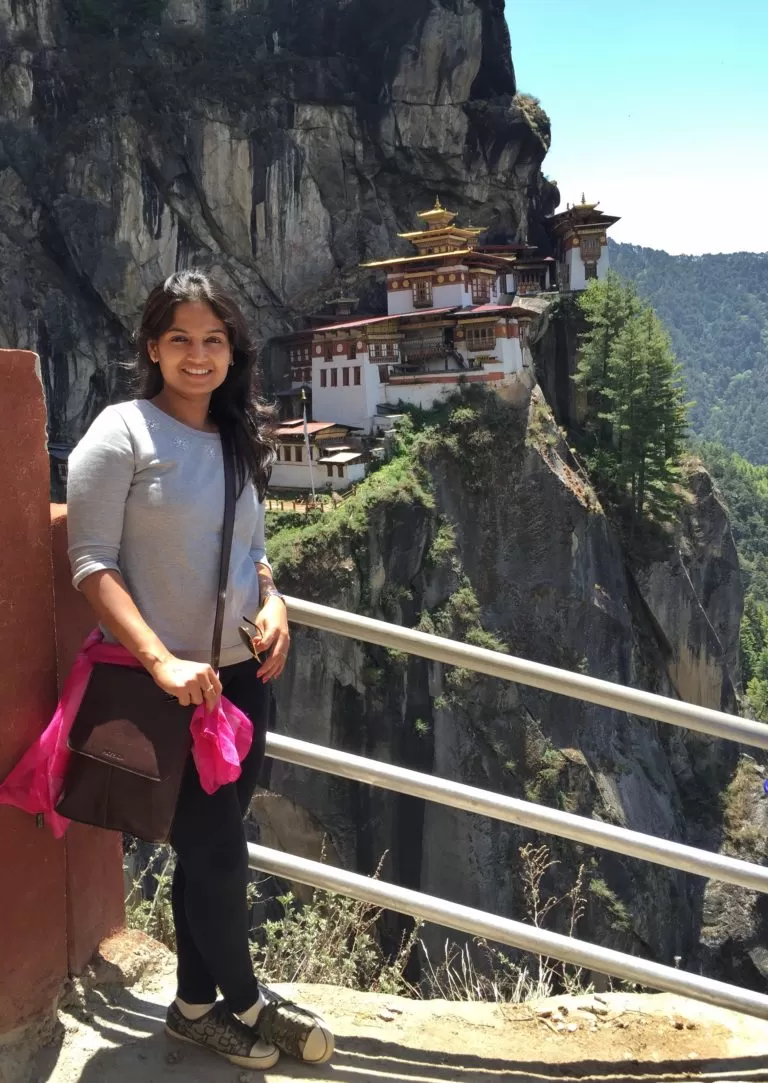
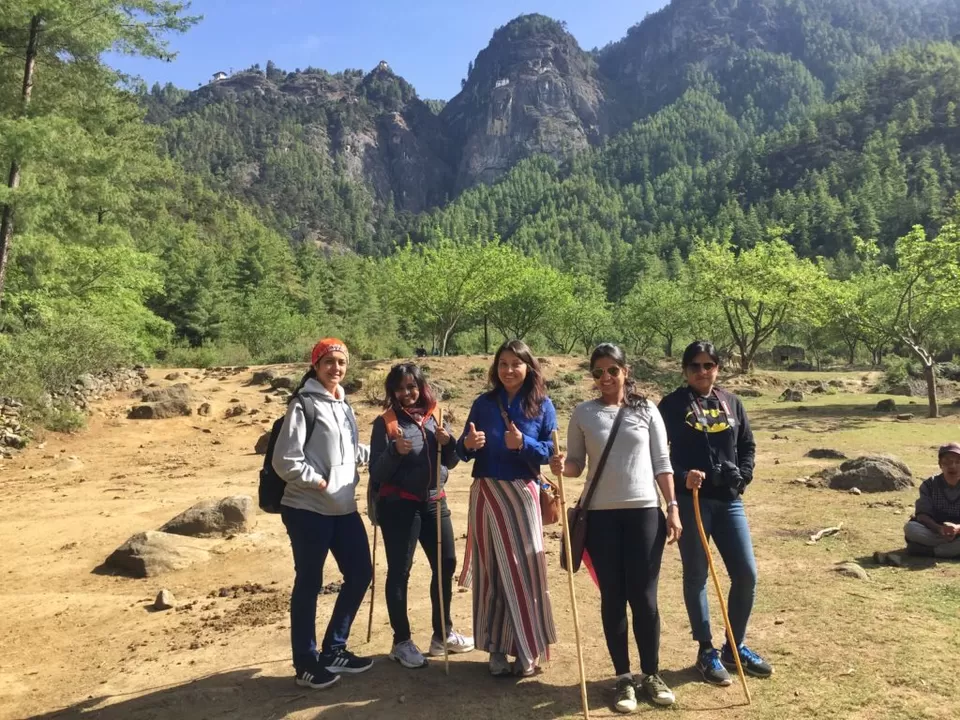
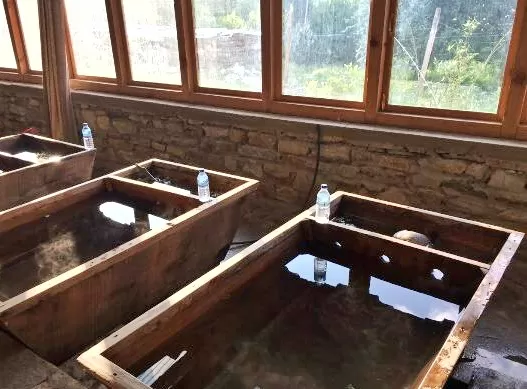
DAY- 8 DEPARTURE
We flew back from Paro to Kolkata and then onwards to Bangalore. Paro to Kolkata was in Drukair, Royal Bhutan Airlines and one of the best Flight experiences I have had so far.
A FEW GENERAL TIPS OVERALL:
Everything shuts down early (6 pm local time), except a few restaurants – so plan your days accordingly. Bhutan Peach wine & Bhutan Whiskey are some of the finest and I enjoyed it every day during my stay. Also, you are in high altitude, so don’t forget to keep yourself well hydrated at all times to keep headaches and dizziness away.
Bhutan’ changeable climate means you have to bring an assortment of clothes including rain gear and good walking/hiking shoes. Mode of transportation within Bhutan is by road. There are no domestic airlines or trains. No vaccinations are currently required for traveling to Bhutan. We visited in May which is Spring season and the best time for treks as well.
Hand-woven textiles, carved masks, woven baskets, wooden bowls, handmade paper products, finely crafted metal objects, thangkha paintings and Bhutan’s exquisite postage stamps are the items mostly purchased by travellers and are the best souvenirs.
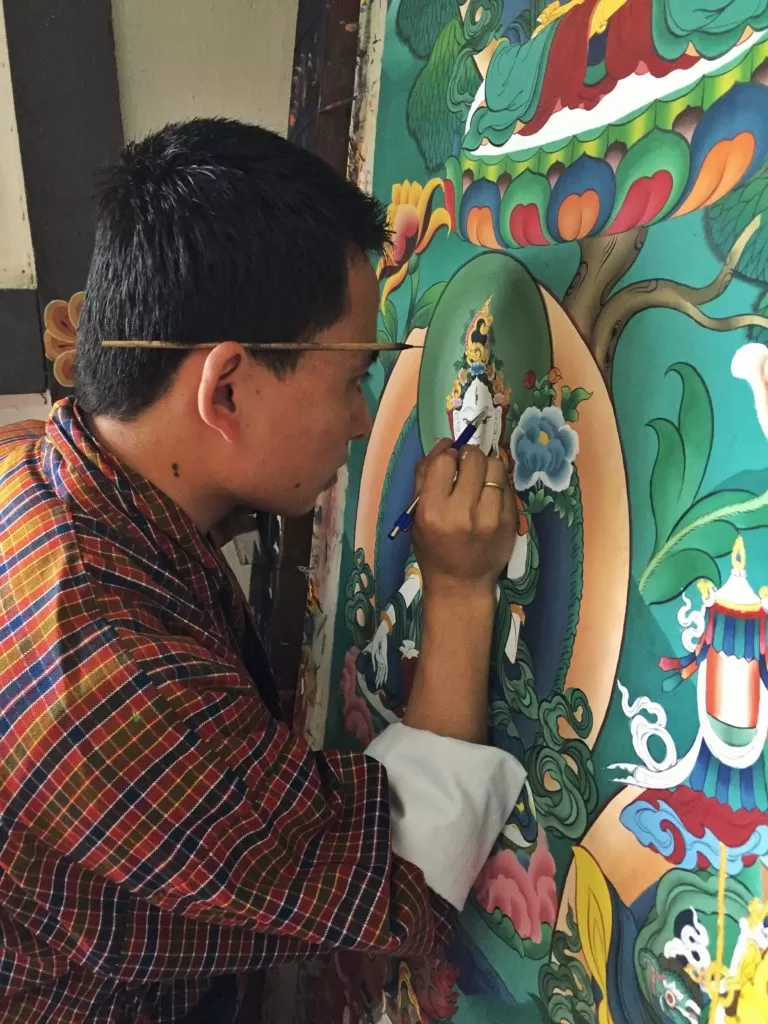
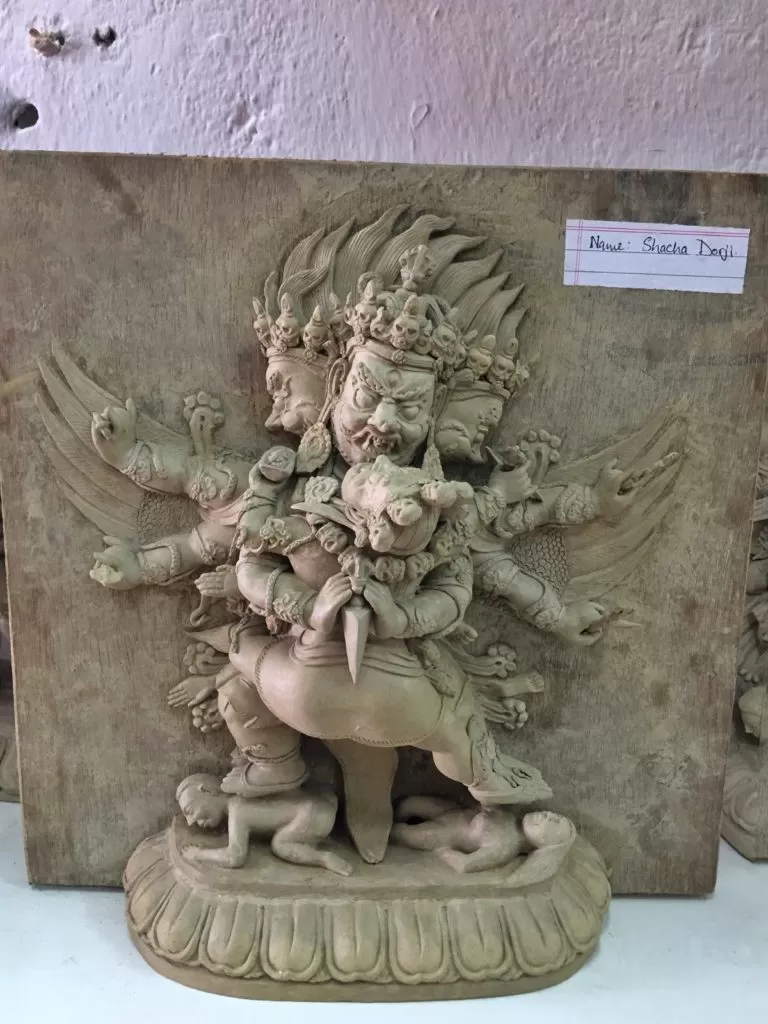
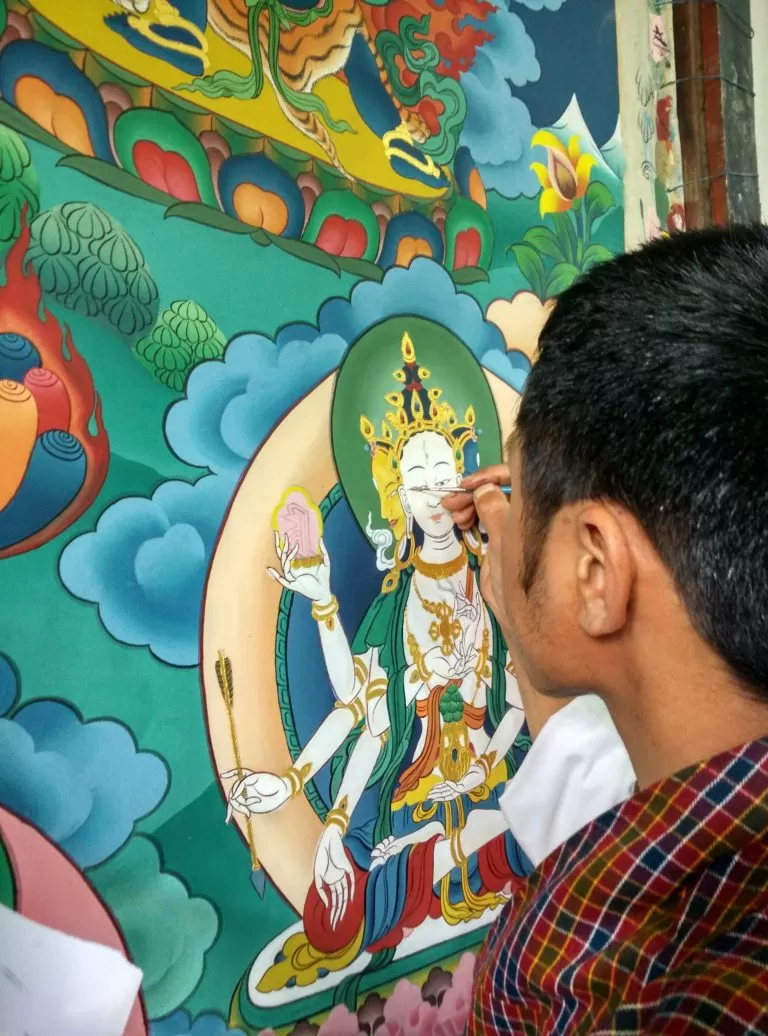
No photography is allowed inside monasteries and temples in Bhutan. A good opportunity to fully utilize your senses to capture the moment.
Tashi Delek – May all good things come to you!
This blog was originally published on Vidoutboundaries.
Frequent searches leading to this page:-
Bhutan vacation, Bhutan vacation packages, Bhutan trip plan, Bhutan tourism cost, best Bhutan packages, holiday in Bhutan tours & travels

